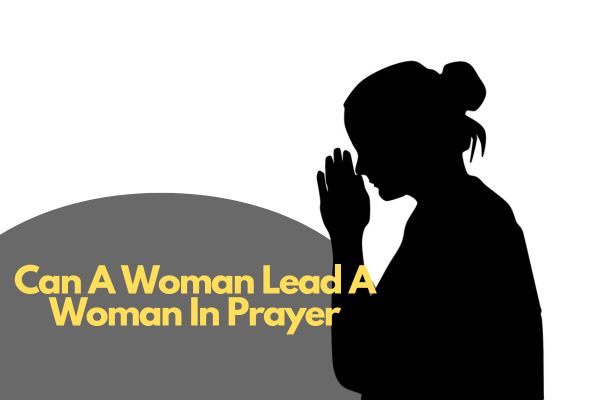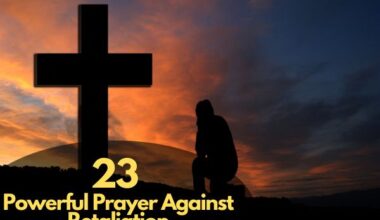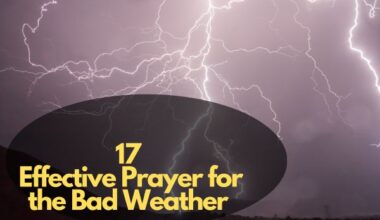Table of Contents Show
The question “Can a Woman Lead a Woman in Prayer” is a complex inquiry that traverses the intersections of religion, culture, and gender. Across diverse faiths and societies, the roles women play in spiritual leadership have been a subject of profound contemplation and debate. This discussion goes deep into historical contexts, religious scriptures, societal norms, and evolving perspectives.
Throughout history, glimpses of women assuming leadership roles in prayer can be found in ancient texts and cultural narratives. Yet, interpretations of religious scriptures and traditional beliefs often shape the boundaries of women’s involvement in matters of worship. In contemporary times, there’s a noticeable shift in certain communities, acknowledging and embracing women in leadership roles in prayer, albeit amid challenges and resistance.
Can A woman Lead A Woman In Prayer?
In many religious traditions, the question of whether a woman can lead another woman in prayer is a complex and nuanced one. Throughout history, various religious and cultural perspectives have shaped the roles of women in leadership, particularly in matters of prayer and worship.
The role of women in leading prayers has been a subject of contemplation and debate across different faiths and societies. It’s a topic that delves into religious doctrines, societal norms, and cultural beliefs, often presenting contrasting viewpoints.
Historical and Cultural Context
In many religious traditions, historical and cultural factors have influenced the roles and responsibilities assigned to women within religious practices. Traditional interpretations and practices have often limited the leadership roles of women, including leading prayers. However, it is crucial to recognize that religious traditions evolve and adapt over time, and there are diverse interpretations and understandings within each tradition.
Islamic Perspective: In Islam, opinions on women leading prayer differ among scholars and communities. In some schools of thought, it is generally accepted that a woman can lead other women in prayer. This view is based on the example of the Prophet Muhammad, who reportedly allowed women to lead prayers for other women during his time. However, other scholars argue that men should lead congregational prayers, while women may lead prayers in private or among other women.
Christian Perspective: Within Christianity, practices regarding women leading prayer can vary among denominations and individual congregations. Some denominations, such as the Anglican and Methodist traditions, allow women to serve as ordained clergy and lead prayer within congregational settings. However, other denominations may have more restrictive views, limiting women’s leadership roles within worship services.
Jewish Perspective: In Judaism, there are differences of opinion regarding women leading prayer. In some branches, women are permitted to lead prayers and read from the Torah in women-only prayer groups. However, in more traditional Orthodox settings, women generally do not lead mixed-gender prayer services or read from the Torah in the presence of men.
Other Religious Traditions: Similar discussions and variations exist within other religious traditions. For example, in Hinduism, women can lead prayers and perform rituals in various contexts. In Buddhism, women can lead prayers and ceremonies, including within monastic communities. However, it is important to research and understand the specific practices and interpretations within each tradition.
Religious Scriptures
The interpretation of religious texts plays a pivotal role in determining whether women can lead prayers. Various religious scriptures have different narratives, leading to diverse perspectives on women’s roles in spiritual leadership.
- The Quran does not explicitly address the issue of women leading prayer. However, there are hadiths (sayings and actions of the Prophet Muhammad) that suggest woman-led prayer during the time of the Prophet. Some scholars argue that these examples indicate the permissibility of women leading prayer for other women. However, there are differing opinions among scholars, and some argue for more restricted roles for women in leading congregational prayers.
- The New Testament does not specifically address the issue of women leading prayer. However, there are instances where women are mentioned as leaders in early Christian communities. For example, in Romans 16:1-2, Phoebe is described as a deaconess. In some Christian denominations, women are allowed to serve as ordained clergy and lead prayers during worship services. However, other denominations have more conservative interpretations that restrict women’s roles in leading prayer.
Challenges Faced
Despite progress, women encounter challenges in assuming leadership roles in prayer due to entrenched beliefs, gender biases, and resistance from conservative factions within religious institutions.
Arguments For Women Leading Prayers
Advocates for gender equality within religious contexts present compelling arguments emphasizing women’s capability and right to lead prayers, citing equality principles.
Arguments Against Women Leading Prayers
Opposing viewpoints often stem from traditional interpretations of religious texts, cultural norms, and resistance to change within religious hierarchies.
Intersectionality in Leadership
The discussion extends beyond gender, considering how factors like race, ethnicity, and socioeconomic status intersect with gender in influencing leadership roles in prayer.
Reinterpretation and Progressive Views
There’s a growing movement advocating for a reinterpretation of religious texts and embracing progressive views that support women in leadership roles in prayer.
Supportive Religious Movements
Certain religious movements and groups actively advocate for women’s participation in leading prayers and promote inclusivity and gender equality within their faith communities.
Impact of Women Leading Prayers
Exploring the potential impact of women assuming leadership roles in prayer, including fostering diverse perspectives and nurturing spiritual communities.
Promotion of Inclusivity
The importance of fostering inclusive religious spaces that respect and recognize the leadership capabilities of women is to promote a more equitable and diverse religious landscape.








